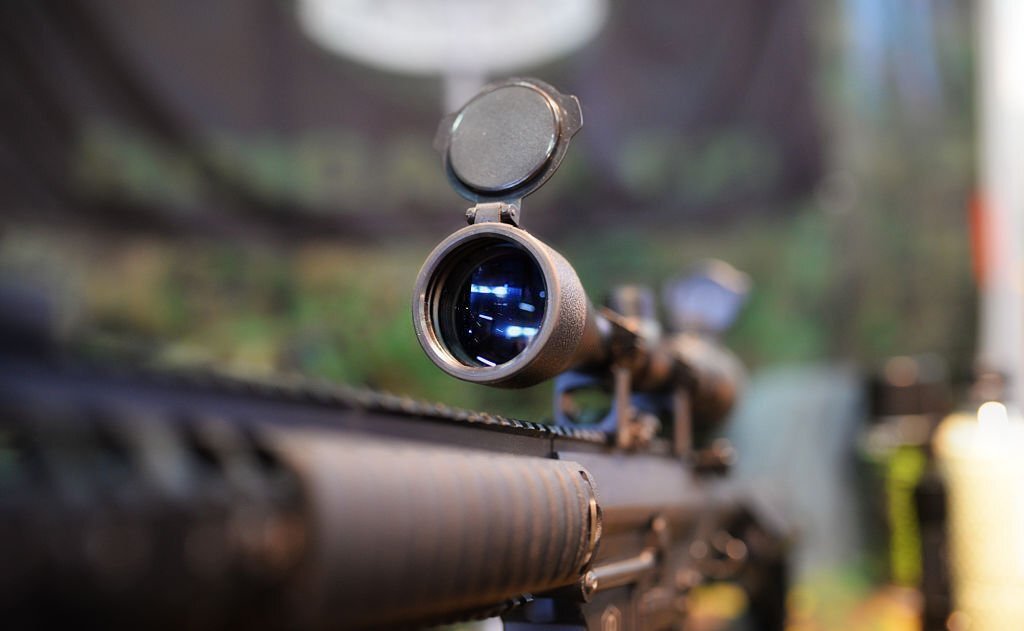Do you like the challenge of hitting targets at long range with a rifle scope? It's an exhilarating experience that requires patience, practice, and the right gear. If you want to take your accuracy to new levels with a rifle scope tooled for long-range shooting, look no further.
We've compiled this comprehensive guide to help equip you with all the knowledge and resources needed to succeed in your mission. From choosing the best caliber ammo to sight adjustments and more - become familiarized with everything necessary for successful long-range shooting today.

Overview of long-range shooting basics
Long-range shooting can be an intense and rewarding experience. It requires patience, focus, and much practice to succeed. To start your long-range shooting adventure, you should have the proper equipment, including a high-quality rifle and scope and all appropriate safety gear.
Additionally, it's essential to understand a few key concepts, such as sight alignment, zeroing the rifle to your target range, proper breathing techniques, and trigger control. With proper practice and knowledge of these basics, long-range shooting can be enjoyable and successful no matter your skill level.
Understanding rifle scopes, ballistic drop & wind drift
One of the most critical pieces of equipments for long-range shooting is the rifle scope. Most scopes have adjustable magnification levels that allow you to zoom in on your target from far away and precisely aim your shots. Additionally, many scopes come with reticles calibrated for ballistic drop and wind drift adjustment; this allows you to quickly make any necessary corrections when aiming at a distant target.
The best way to understand how these reticle adjustments work is by researching (and practicing) beforehand. It will help you make proper adjustments while shooting and get the best accurate results possible. With the best rifle light, you can even practice at night.
Choosing the suitable optics for your rifle
The type of optics you choose for your rifle will drastically affect the accuracy of your shots. If you want to shoot targets at longer distances, consider purchasing a scope with higher magnification settings that can offer more precise aiming capabilities. Additionally, scopes with variable power zoom are often helpful as they allow you to quickly adjust the amount of magnification so that you can make corrections on the fly while shooting.
Also, be sure to research and understand reticles and how they help when making adjustments and taking long-range shots. Many rifle scopes have advanced reticles such as BDC (bullet drop compensator) & MIL/MOA (minute of angle/milliradian), which help account for ballistic drop and wind drift.
Preparing your rifle and scope for a long-range shot
After you set up your rifle and scope, the next step is to ensure it's adequately equipped for long-range shooting. Ensure your rifle is correctly sighted in, and the scope has been adjusted for ballistic drop and wind drift. You should also check the ammunition you are using to ensure it is suitable for long-range shooting.
Cleaning your rifle and scope regularly will also help maintain accuracy and prevent any potential issues while shooting. Furthermore, use a quality gun cleaning kit to quickly perform maintenance on your firearm before taking it out to the range.
Adjusting windage, elevation, and parallax settings on your scope
Once your rifle and scope are adequately set up for long-range shooting, the next step is to adjust the windage, elevation, and parallax settings on your scope. Windage adjustment allows you to correct crosswinds while shooting, while elevation adjustment compensates for bullet drop over distance. Parallax adjustment helps ensure that the reticle stays on target at various distances by adjusting its focus relative to the target.
These adjustments should be made regularly to maintain accuracy and improve overall performance. Additionally, it's also essential to understand how different environmental factors, such as temperature or humidity, can affect accuracy when making these adjustments.
Zeroing in on your scope for maximum accuracy
The last step in long-range shooting is to "zero" your scope for maximum accuracy. It involves taking multiple shots at a target from different distances and adjusting the windage, elevation, and parallax settings until you achieve consistent results. You can practice this on paper or steel plate targets before going into the field.
Once you have zeroed in your rifle, you will be ready to make accurate shots at long distances with minimal effort. It can make a massive difference in the accuracy of your shots, so it's essential to take the time and effort to properly zero in your scope.
Setting up for a steady and comfortable shot
Finally, when you're ready to take long-range shots, ensure you are in the most comfortable and stable position possible. It will increase accuracy and reduce fatigue while shooting. Use sandbags or other support equipment to stabilize your rifle and scope if necessary.
Also, be sure to adjust your breathing technique so that it remains consistent throughout the entire duration of the shot. Taking slow breaths followed by short pauses helps keep your heart rate low and will help ensure that each shot is as accurate as possible.
Conclusion
By following these tips, you should be able to get the best results out of your rifle scope when taking long-range shots. After some practice, you'll start to better understand the techniques and methods used in long-range shooting, allowing you to make more accurate shots with greater ease. With the proper knowledge, equipment, and practice, you'll confidently make those long-range shots.
